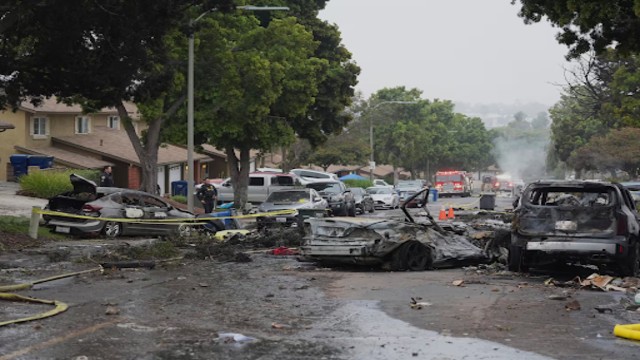
On a Saturday morning at nine o'clock, the scene is Fifth Avenue S.W. As you leave your home, where will you choose to go? (Photo by Jim Brown, courtesy of CBC)
In the wake of a challenging economic downturn that began in 2015, downtown Calgary found itself grappling with a staggering 30% vacancy rate in office spaces by 2020. This significant plunge in the economy not only affected the city's property tax base but also led to a revenue crisis at city hall. Responding to this critical situation, the city initiated the Downtown Office Conversion Program, an ambitious plan aimed at reclaiming six million square feet of vacant office space by 2031 while concurrently increasing the downtown population by 20%.
To kickstart this monumental endeavor, the city allocated a startup fund of $200 million, with a commitment to invest $1 billion throughout the program's duration. Developers were incentivized with a streamlined approval process and a substantial $75 per square foot to convert empty office towers into residential flat buildings. The response from developers has been robust, with 17 conversion projects in the pipeline, 13 of which are currently active, anticipating the transformation of 2.3 million square feet of office space. Such success has garnered attention nationally and internationally for its bold approach.
However, amidst the applause for the program's achievements, concerns arise about the future residents of the anticipated 2,300 new homes. Questions loom about their day-to-day experiences: where will they shop for groceries, socialize, or send their children to school? Addressing these questions prompts a deeper examination of the broader urban environment.
Beverly Sandalack, a professor at the University of Calgary's School of Architecture, Planning, and Landscape, suggests that reversing the decline of Calgary's downtown requires radical strategies. While the city's Greater Downtown Plan, approved in 2021, outlines options to shift the focus from a business-centric core to a more neighborhood-oriented space, challenges persist.
Thom Mahler, the director of the city's downtown strategy, highlights the need to reassess downtown streets, particularly the wide, one-way avenues that currently create an after-hours dead zone. The concept of flexible streets is being explored, allowing for adaptable use of lanes for various purposes, from traffic to temporary parks or hospitality patios.
Paul Fairie, a downtown resident and coordinator of the Downtown Core Neighbourhood Association, emphasizes the importance of "boring things" like grocery stores, inexpensive restaurants, and coffee shops that stay open after 6 p.m. While Mahler notes that private developers will largely address these needs, the city acknowledges the importance of such amenities in attracting residents.
In addition to private sector involvement, the city sees potential in repurposing vacant lots and city-owned surface parking lots. The exploration of diversified uses for these spaces, such as festivals and events, aims to activate areas and gather insights for more permanent plans.
However, critics, including Sandalack, emphasize the magnitude of the challenge, asserting that tinkering with existing structures may not suffice. Sandalack suggests that considering extreme options, including tearing down and rebuilding, should be on the table. The ongoing dialogue underscores the complex interplay between urban planning, community needs, and the revitalization of a once-thriving downtown. As the city endeavors to undo past missteps, the aspiration remains to reclaim the essence of a vibrant cityscape.















